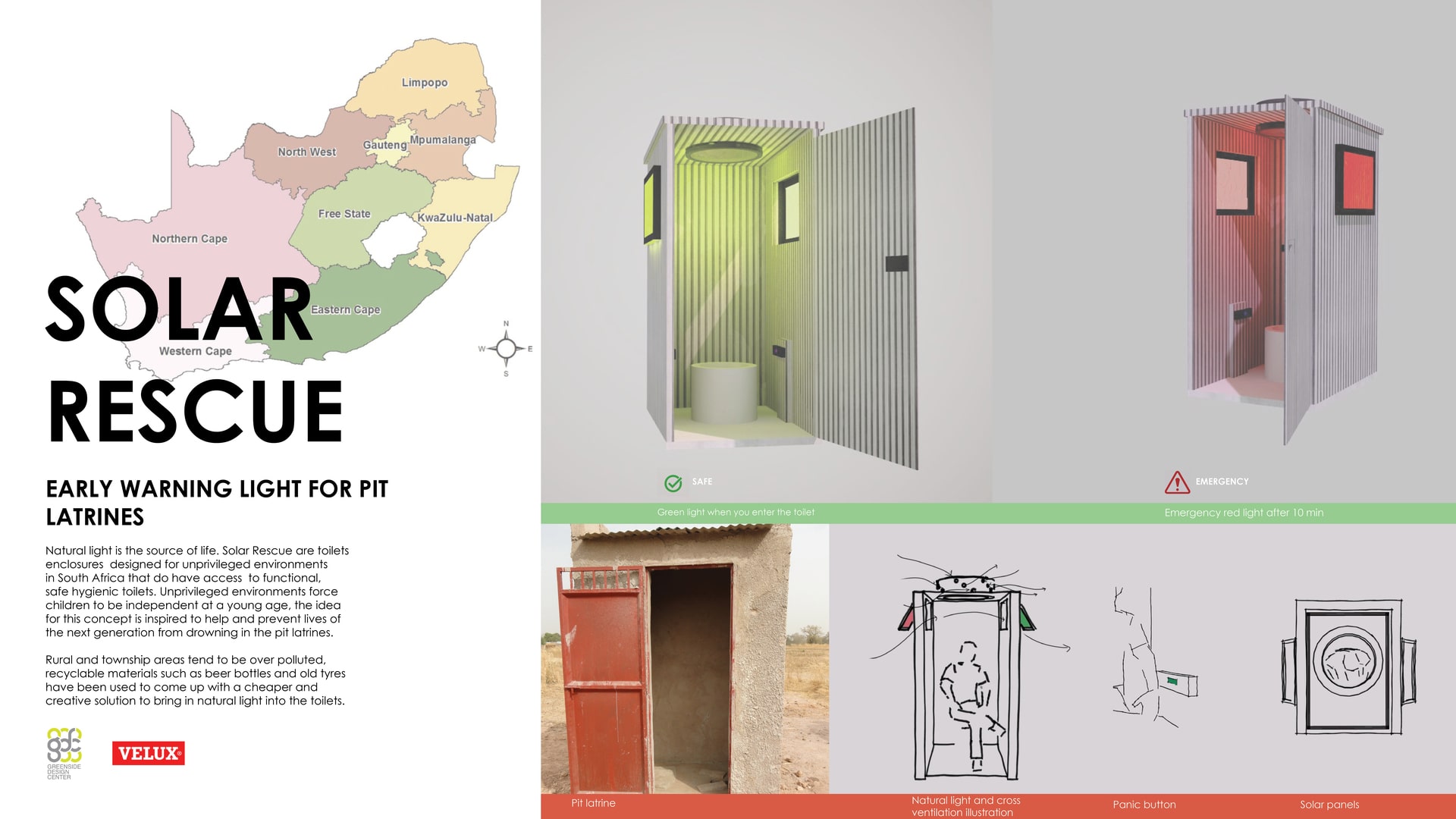Project Description
Michael Komape was a five year old boy from Mahlodumela primary school in Chebeng village who suffocated in human faeces when he went to relieve himself and the school latrine collapsed and he fell in, in 2014. In the South African township and mostly rural areas, children have no choice but to be independent at the age of 4 years, sometimes younger. Drowning happens quickly and silently and is the leading cause of injury death in children from 1-4 years. More than 4,500 schools have pit latrine toilets, out of almost 25,000 nationwide. Many are made from cheap metal, are shoddily built and left uncovered. Eastern Cape, KwaZulu-Natal and Limpopo provinces are among the worst. Eastern Cape has 61 schools with no toilets at all, and 1,585 schools with pit latrines Neighbouring KwaZulu-Natal province has 1,379 pit latrines in use. Two handles on both sides could also prevent a child from falling in the pits. A switch in one of the handles can help create awareness. This method may also be beneficial for adults. Solar power can be used to absorb energy for the awareness lights. This will help refrain from using electricity. Townships and rural areas are forever decorated by pollution as people litter everywhere. For these toilets, the aim is to use recyclable materials such as beer bottles and old tyres that are not of use to bring in natural light and air ventilation. This is not only a cheaper way of inviting light in the toilets but also a way of reducing pollution in these areas and a way of social teamwork because I believe the community will be able to build these toilets themselves. This attracts environmental psychology as this project will be personal because the community will be able to save each other’s lives but most importantly save the next generation. Because there are 3 problems that need to tackled, I had to find a way of integrating natural light, hygiene and safety. Natural light can be reflected on the glass bottles in the tyre and on the sides. The glass bottles on top will create an aesthetic look because of the different colours. For Hygiene, cross ventilation will happen between the opposite windows and through the holes in the tyre. For safety, there will be small solar panels on top the toilet. Because the windows are made of white bottle glass the green (safe) and red (emergency) colours will reflect when necessary. There will also be a panic button for emergency. When an adult or child enters the toilet, the green light will shine and then after 10-15min, the light will turn red. This will be an alert, especially for children. Parents, care-takers and teachers will be alert when the light turns red. I believe these toilet enclosures will make a difference in South Africa as well as other countries that are affected by the unhygienic, unsafe and impractical pit latrines.
